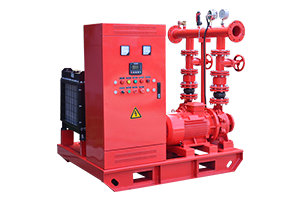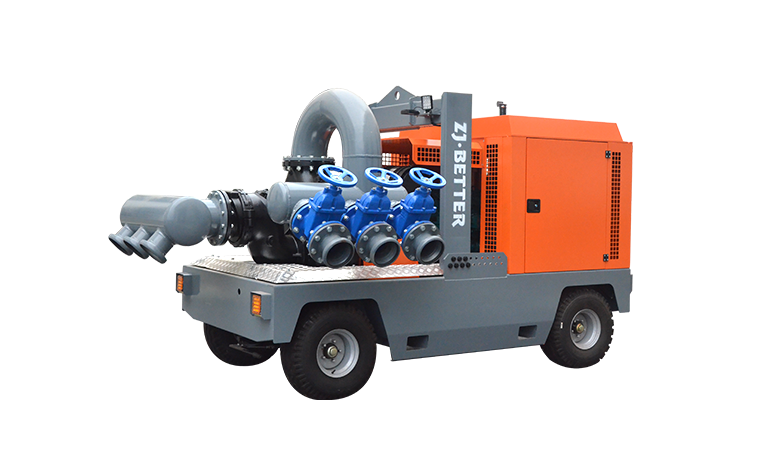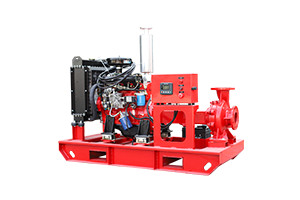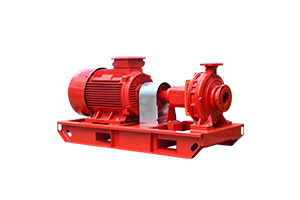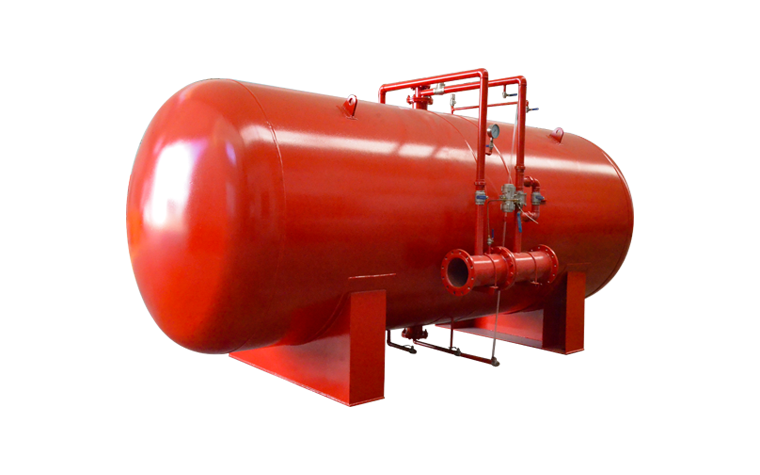-
 Feb 08, 2023What is the appropriate installation height of the water pump and precautions when using a submersible pumpThe key to the installation technology of centrifugal pumps is to determine the installation height of the pump. This height refers to the vertical distance from the water surface of the water source to the centerline of the impeller of the pump. It cannot be confused with the allowable suction vacuum height. The allowable suction vacuum height marked on the pump nameplate or product manual refers to the vacuum value on the water inlet section of the pump, and It is measured under the condition of 1 standard atmospheric pressure and water temperature of 20 degrees Celsius. It does not consider the water flow conditions after the suction pipe is matched. The installation height of the water pump should be the remaining value after deducting the loss lift of the suction pipe from the suction vacuum height, which should overcome the actual topographical suction height. The installation height of the water pump cannot exceed the calculated value, otherwise, the water pump will not be able to pump water. In addition, the influence on the calculated value is the resistance loss head of the suction pipe. Therefore, it is advisable to adopt the shortest pipeline layout and install as few fittings as possible. It may also be considered to properly equip water pipes with larger diameters to reduce the flow rate in the pipes.
Feb 08, 2023What is the appropriate installation height of the water pump and precautions when using a submersible pumpThe key to the installation technology of centrifugal pumps is to determine the installation height of the pump. This height refers to the vertical distance from the water surface of the water source to the centerline of the impeller of the pump. It cannot be confused with the allowable suction vacuum height. The allowable suction vacuum height marked on the pump nameplate or product manual refers to the vacuum value on the water inlet section of the pump, and It is measured under the condition of 1 standard atmospheric pressure and water temperature of 20 degrees Celsius. It does not consider the water flow conditions after the suction pipe is matched. The installation height of the water pump should be the remaining value after deducting the loss lift of the suction pipe from the suction vacuum height, which should overcome the actual topographical suction height. The installation height of the water pump cannot exceed the calculated value, otherwise, the water pump will not be able to pump water. In addition, the influence on the calculated value is the resistance loss head of the suction pipe. Therefore, it is advisable to adopt the shortest pipeline layout and install as few fittings as possible. It may also be considered to properly equip water pipes with larger diameters to reduce the flow rate in the pipes.
It should be pointed out that when the elevation and water temperature of the pump installation site are different from the test conditions, for example, the local altitude is above 300 meters or the temperature of the water being pumped exceeds 20 degrees Celsius, the calculated value should be corrected. That is, the atmospheric pressure at different altitudes and the saturated vapor pressure when the water temperature is higher than 20 degrees Celsius. However, when the water temperature is below 20 degrees Celsius, the saturated vapor pressure is negligible.
From the perspective of pipeline installation technology, the water suction pipeline must be strictly sealed and must not leak air or water. Otherwise, the vacuum degree at the water inlet of the water pump will be destroyed, the water output of the water pump will be reduced, and even the water cannot be pumped in severe cases. Therefore, it is necessary to do a good job in the interface work of the pipeline to ensure the construction quality of the pipeline connection.
The submersible pump works underwater. It has a compact structure and light weight. It does not pump water from the well and does not need a long drive shaft. Therefore, submersible pumps are very suitable for rural well water irrigation, and QW type submersible pumps are more widely used. This kind of submersible pump adopts waterproof measures such as mechanical seal or air seal to keep the inside of the motor dry and free from water intrusion. Pay attention to the following points when using it:
(1) Check whether the air vent, water vent, oil drain hole and the seal of the cable joint of the submersible pump are loose, and must be tightened if loose.
(2) Use a 500 volt meter to check the insulation resistance. It should not be less than 0.5 megohms. If it is lower than this value, open the water and vent holes for drying or drying.
(3) Check the cable of the submersible pump. If it is cracked or broken, it should be replaced to avoid leakage.
(4) Before starting the submersible pump, check all the circuits and switches to see if the wiring is correct and secure, then idle on the ground for 3 to 5 minutes (the time should not be too long, so as not to damage the parts or burn out the motor windings), and check the motor Whether the direction of rotation is correct, if there is no problem with the above, it can be put into water for use.
(5) When the submersible pump is used in water, the cable must not be stressed, and it should be tied to the wooden frame at the wellhead with ropes. The maximum depth of the electric pump into the water is 3 meters, and the minimum depth is 0.5 meters (calculated from the center of the impeller).
(6) During the operation of the submersible pump, the change of the water level in the well should be observed frequently. The motor must not be exposed to the water surface or sink into the mud, so as not to affect the heat dissipation of the motor and burn out the winding. The electric pump should be raised and lowered at any time with the change of the water level in the well. If the water volume decreases or is interrupted, the cause should be found out immediately or stopped for inspection. The cable should not rub against the well wall, so as to prevent the well water from penetrating into the motor along the cable core after the cable is worn out.
(7) For submersible pumps with new or newly replaced integral sealing boxes, check whether the sealing is good after 50 hours of use, and then check once a month, and check whether the shielding sleeve between the motor rotor and stator is well sealed.
(8) After one year of use, the corrosion of the submersible pump should be checked, and the rust should be removed and painted. If the submersible pump is not used for a long time, it should be carefully checked and stored in a dry and ventilated house.View details -
 Feb 07, 2023Performance characteristics of self-operated differential pressure regulating valve and flow selection of fire pump and sewage pump1. Overview of self-operated differential pressure regulating valve:
Feb 07, 2023Performance characteristics of self-operated differential pressure regulating valve and flow selection of fire pump and sewage pump1. Overview of self-operated differential pressure regulating valve:
ZYF-16 self-operated differential pressure control valve does not require external energy, and relies on the pressure change of the medium to be regulated for automatic adjustment, automatically eliminates the remaining pressure head of the pipe network and the flow change caused by pressure fluctuations, and keeps the user's inlet and outlet pressure differences constant. Helps stabilize system operation. Especially suitable for household metering or automatic control system.
2. Performance characteristics of self-operated differential pressure regulating valve:
The differential pressure valve is a double disc structure with small unbalanced force of the valve stem and compact structure. It is used in the heating (air conditioning) water system to keep the pressure difference of the controlled system constant, and has the following characteristics:
1. Constant pressure difference of the controlled system;
2. Support the internal self-regulation of the controlled system;
3. Absorb the pressure difference fluctuation of the external network;
4. The advanced stepless pressure regulation structure is adopted, and the control pressure difference can be adjusted up to 25:1;
5. It has the function of automatically eliminating blockage;
6. The flange size conforms to GB4216.2 medium gray cast iron flange size.
The drainage pumps used in buildings include submersible sewage pumps, submerged sewage pumps, vertical sewage pumps and horizontal sewage pumps. Due to the generally small site in the building and the small displacement, submersible sewage pumps and submerged sewage pumps can be preferred for drainage pumps. Among them, submerged sewage pumps are generally used in important places; vertical sewage pumps and horizontal sewage pumps require isolation. Seismic foundation, self-irrigating water absorption, and occupying a certain amount of space, so it is rarely used in buildings.
The flow rate of fire pumps and sewage pumps should be selected according to the second flow rate of domestic drainage design; when there is displacement adjustment, it can be selected according to the maximum hourly flow rate of domestic drainage. The flow rate of the drainage pump in the fire elevator sump is not less than 10L/s. The head of the sewage pump is calculated and determined according to the lifting height and pipeline loss, and then a certain free head is added. The free water head should be 0.02~0.03MPa. The flow velocity of the sewage pump suction pipe and outlet pipe should not be less than 0.7m/s, and should not be greater than 2.0m/s.
In public buildings, a spare pump should be set up for each domestic drainage sump, and it should be operated alternately at ordinary times. For the drainage of the basement, equipment room, and garage to flush the ground, if there are two or more drainage pumps, there is no need to install a pump. When the sump cannot be equipped with an emergency drainage pipe, the water pump should have uninterrupted power supply; when the drainage inlet pipe can be closed, the uninterrupted power supply may not be provided, but an alarm device should be provided.
When lifting sewage and wastewater with large impurities, the outlet pipes of submersible sewage pumps in different sumps should not be discharged together; when lifting general waste water, the outlet pipes of submersible sewage pumps in different sumps can be combined and discharged according to the actual situation .
When two or more water pumps share one outlet pipe, valves and check valves should be installed on the outlet pipe of each pump. When the drainage of a single water pump may cause backflow, a check valve should be installed. It is not allowed to combine the pressure drain and the gravity drain in the building. When the submersible sewage pump lifts large debris, the submersible sewage pump should be equipped with a crushing device; when lifting sewage containing more fibers, a large channel submersible sewage pump should be used.
When the motor power of the submersible sewage pump is greater than or equal to 7.5kW or the diameter of the water outlet is greater than or equal to DN100, the fixed self-coupling device of the water pump can be used; when the power of the motor of the submersible sewage pump is less than 7.5kW or the diameter of the water outlet is less than DN100, a hose can be installed Mobile installation. When a submersible sewage pump is used for drainage of the sewage collection tank, a fixed self-coupling device for the water pump shall be installed to facilitate maintenance of the water pump. The drainage pump should be able to start and stop automatically and manually start and stop on site. Multiple water pumps can be operated in parallel and alternately, and can also be put into operation in sections.View details -
 Feb 06, 2023Principles for setting the outlet and inlet diameters of centrifugal pumpsGenerally, the outlet diameter is selected according to the economic flow rate, and the outlet diameter is determined according to the flow rate. When the pipe diameter is less than 250, it is 1-1.2m/s, and when the pipe diameter is 250-1000, it is 1.2-1.6m/s. From a technical point of view, the speed of water flow It should not exceed 2.5-3.0m/s, and the minimum speed should not be less than 0.6m/s (to prevent deposition).
Feb 06, 2023Principles for setting the outlet and inlet diameters of centrifugal pumpsGenerally, the outlet diameter is selected according to the economic flow rate, and the outlet diameter is determined according to the flow rate. When the pipe diameter is less than 250, it is 1-1.2m/s, and when the pipe diameter is 250-1000, it is 1.2-1.6m/s. From a technical point of view, the speed of water flow It should not exceed 2.5-3.0m/s, and the minimum speed should not be less than 0.6m/s (to prevent deposition).
The inlet velocity is small, the advantage
1. It is beneficial to increase the NPSH of the device NPSHA, and the pump is not easy to cavitate;
2. The pipeline has little scour, especially the medium containing particles;
3. It is not easy to generate static electricity;
4. The pressure drop of the inlet filter is small;
5. In the same section, the medium flows evenly and the hydraulic loss is small.
The inlet velocity is small, the disadvantage
1. Under the same flow rate, the pipe diameter needs to be large and the pipeline cost is high;
2. For some easy-to-sediment media, the flow rate is too small, which may easily cause sedimentation and clogging;
3. The impeller inlet is large, the diameter of the mouth ring is large, and the leakage is large.View details -
 Feb 06, 2023There are three main reasons for the shrinkage of fire pumpsviolent vibrating pump
Feb 06, 2023There are three main reasons for the shrinkage of fire pumpsviolent vibrating pump
It is possible to automatically rotate the rotor without obstacles, or the coupling is not well combined, and the bearing is worn out; it can also be rotated all loose, broken; or maybe it is because the pipe support is not strong, etc. Discern, repair, reinforce, to cause change.
Leaks or ventilation ducts
It can be used as a bolt that is not tightened tightly. If the leakage is not serious, the lime slurry caught in the center of the fire pump lime can be ventilated or seeped or mixed with tar. For temporary repairs, apply some damp mud or a soft towel. If you're leaking in the joints, then tighten the bolts by hand. Leakage mainly has to be disassembled from a new one.
Because the total pressure is too tight, the automatic rotor can be unobstructed, the fire pump or coupling is not well combined, and the bearings are worn out; Discern, repair, reinforce, to cause change.
Frozen water cannot enter the material, or the nominal protection of the shaft. Appropriate aggregate, clearing measures such as seal pipe obstruction can be taken. Total wear must be changed to a new one. The butter of the penetration unit, in order for the slang to be staggered, this can reduce the penetration. After the first circle is installed, the gland should always be tightened to adjust the thickness.
The fire pump does not absorb or does not drain the pump. The cause of the fire pump is stuck for the bottom valve, the level of filtered water is too high, all the silts, the fire pump is water-absorbing or water-permeable, and the impeller channel can be blocked by turning. It can be distinguished that the bottom valve is repaired, the blockage is eliminated, the steering is correct, the impeller is cleaned and other measures are taken to solve the problem.View details -
 Feb 03, 2023Fire pump maintenance rulesThe long-term operation of the fire pump puts a lot of pressure on the equipment, especially under the condition of continuous large flow, more attention should be paid to the maintenance and maintenance of the equipment. So what are the maintenance rules for fire pumps?
Feb 03, 2023Fire pump maintenance rulesThe long-term operation of the fire pump puts a lot of pressure on the equipment, especially under the condition of continuous large flow, more attention should be paid to the maintenance and maintenance of the equipment. So what are the maintenance rules for fire pumps?
1. The long-term operation of the stabilized fire pump requires a certain bearing capacity. It is forbidden for the fire pump to continue to operate for a long time under the condition of cavitation and large flow, and the equipment motor is in the state of excessive flow for a long time.
2. Regularly check the tightness of the bolts at the joints of the fire pump installation. Loose bolts will cause severe vibration during operation of the equipment and affect normal use. At the same time, it is forbidden to start the fire pump in the dry grinding state, otherwise the damage to the mechanical seal will be serious.
3. It must be used within the specified working conditions of the fire pump, and regularly check the motor flow value of the fire pump to see if it is overloaded. Before the equipment is started, the electric motor pump can be rotated a few times to prevent the equipment from suddenly starting and causing parts to break and break.
4. The working temperature of the bearing is around 50°C, so a lubricating grease with good heat resistance and waterproof should be selected. Every time the stabilized fire pump runs for 500 hours, it needs to add lubricating oil. It is best to choose a suitable lubricating oil, which is heat-resistant and waterproof, and add it to the bearing part of the pump. When adding lubricating oil, keep it clean and free of particles, which can reduce the wear and tear of the fire pump during operation.
5. Mechanical equipment such as fire pumps are prone to wear and tear after long-term operation. It is recommended to arrange a thorough inspection every year. For severely worn bearings and vulnerable parts, disassemble and replace them if necessary.View details -
 Feb 03, 2023Six Secrets of Fire Pump Engine LongevityTip 1: Grinding is running-in. This is the basis for extending the service life of the engine. Whether it is a new engine or an overhauled engine, it must be run-in according to the regulations before it can be put into normal operation.
Feb 03, 2023Six Secrets of Fire Pump Engine LongevityTip 1: Grinding is running-in. This is the basis for extending the service life of the engine. Whether it is a new engine or an overhauled engine, it must be run-in according to the regulations before it can be put into normal operation.
Secret 2: Purification means cleansing of oil, water, air and body. If the diesel and gasoline are impure, the precise matching body will be worn out, and the fitting gap will increase, resulting in oil leakage, oil dripping, lower oil supply pressure, larger gap, and even serious failures such as oil circuit blockage, shaft holding, and tile burning. ;If the air contains a lot of dust, it will accelerate the wear of the cylinder liner, piston and piston ring; if the cooling water is impure, the cooling system will be blocked by scale, which will hinder the heat dissipation of the engine, the lubrication condition will become poor, and the body will wear seriously; If the surface is not clean, the surface will be corroded and the service life will be shortened.
Tip 3: Feet are oil feet, water feet, and air feet. If the oil supply is insufficient or interrupted, the engine lubrication will be poor, the engine body will be severely worn and even burnt; if the cooling water is insufficient, the engine temperature will be too high, the power will drop, the wear will increase, and the service life will be shortened; if the air supply is not timely or interrupted , there will be difficulty in starting, poor combustion, power drop, and the engine cannot run normally.
Tip 4: Inspection That is, check the fastening parts frequently. Due to the influence of vibration, shock and uneven load during the use of diesel engines and gasoline engines, bolts and nuts are easy to loosen. The adjusting bolts of each part must be checked to avoid accidents that damage the machine body due to looseness.
Tip 5: Adjustment means that the valve clearance, valve timing, fuel supply advance angle, fuel injection pressure and ignition timing of diesel or gasoline engines should be checked and adjusted in time to ensure that the engine is in good condition, so as to save fuel and prolong the service life .
Secret six: use the engine correctly. Before starting, the lubricating parts such as shafts and bushes should be lubricated. After starting, wait until the water temperature is above 40°C before putting it into operation. Prolonged overloading or low-speed operation is strictly prohibited. Before stopping, unload the load and reduce the speed. After parking in winter, drain the cooling water when the water temperature drops to 50°C.
Observe and check frequently, find faults, eliminate them in time, and do a good job of engine maintenance at ordinary times, so that the machine can always be kept in good running condition. If you have the need to purchase fire pumps, please contact us by phone.View details

